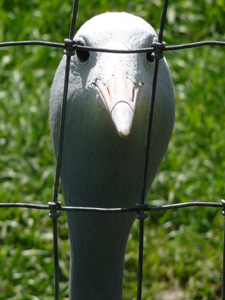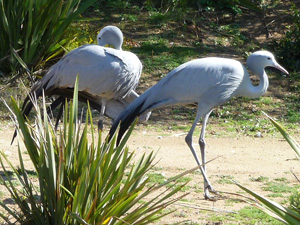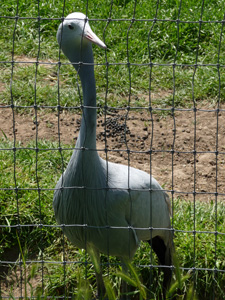
Blue Cranes
Anthropoides paradisea
No, this isn't a cobra. The Blue Crane does give me the shivers when she puffs up in the threat display you see to the left, but this South African close cousin of the lovely Demoiselle, is not actually deadly. Still, there's something powerful about that "hood" and the steady gaze. And it works for her. Among the Zulu, only royalty were allowed to wear her feathers, and among the Xhosa, the feathers were reserved for warriors in battle.
The Blue crane (aka Stanley Crane) is the national bird of South Africa where almost all of them live (map of their range).
Blue Crane Mating


Blue cranes are monogamous. Of course they are—they're cranes! During the breeding season, pairs are very territorial, but after the chicks have fledged, they return to spend the rest of the year in large sedges (the word for a group of cranes).
More Blue Crane Information


- Estimated Global Population: Approximately 25,000. Classified as "Vulnerable"
- Threats include illegal trading, power line collisions, poisoning, and the ever present habitat loss
- Are not as dependent on wetlands as some species of cranes, so they thrive in grasslands
- Go through a full molting period in late summer. They are flightless during this time and tend to congregate in large flocks
Want to Know More?